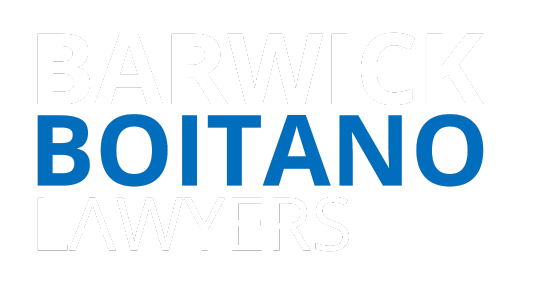What do you do when someone owes you money, or when you owe money to someone else? The law provides very clear procedural steps to clarify what the parties should do in these circumstances. Read on to learn more about these steps, but do not rely on this information: it’s not legal advice, and if you find debt recovery lawyers or bankruptcy lawyers in Parramatta for yourself in a situation where money is owed (either by or to you) you should consult a legal practitioner like Barwick Boitano Lawyers to ensure that you take the action most appropriate for your circumstances.
Getting the documents organised
The first step is to gather and document all records of the money owed. It may be difficult to provide formal records, however, any documentation which will support the Lender’s claim to the debt (eg, bank statements) will assist as the matter progresses. Parties should try to resolve debt-related disputes without recourse to the legal system. It undoubtedly true that the inconvenience of formal legal action means that most other paths to resolution are preferable. In any case, the borrower will probably not get the chance to gather documents until they receive notice that a dispute is being formalised.
If the matter is beyond direct resolution, the next step is to produce formalise the issue through a Letter of Demand.
Drafting a Letter of Demand
A Letter of Demand is a serious step in debt recovery. It is the first signal to the other party that the lender wishes to pursue and resolve the matter. Therefore, lenders should be very careful to draft such a letter very carefully and accurately. It should set out the dates where money was borrowed and due for repayment, as well as specifying the exact amount in question. A solicitor can assist to ensure that all bases are covered at this early stage.
If the Letter of Demand does not lead to a resolution, the lender will need to commence formal proceedings with the Court. Which Court? Good question.
Ensuring the appropriate court is selected
The appropriate court will vary depending on the amount owed. Claims of $0-10,000 should be contested in the Small Claims Division of the Local Court. Claims of $0-10,000 this should read claims above $10,000 to $60,000.00 should be contested in the General Division of the Local Court. Amounts beyond this threshold beyond $60,000.00 must be contested in the District Court.
Drafting a Statement of Liquidated Claim
Proceedings are commenced through a Statement of Liquidated Claim lodged with the relevant court. This is document is the formal notification that you wish to pursue your debtor through the legal system. The document must specify the amount owed. If there is doubt over the exact amount owed, a slightly different form is used, but let’s not get distracted: the focus here is a debt for a defined amount. The debtor has 4 options upon receiving the statement of liquidated claim: ignore it, confess the debt (whereby the debt is recognised and re-payment is structured through rules set down by the law) or arrange payment directly with the lender (whereby the matter is resolved without further input of the legal system).lodge a Notice of Defence (meaning they wish to contest the matter).
Responding to the Statement of Liquidated Claim
The borrower has 28 days to respond to a Statement of Liquidated Claim. The four options upon receipt of the statement are discussed below.
Ignoring the statement of liquidated claim is dangerous, because the lender can then obtain default judgment in their favour and at this point it is too late for the lender to dispute the existence or size of the debt.
Confessing the debt amounts to judgment in favour of the lender and the court will establish some clear parameters for re-payment of the debt.
The borrower may choose to accept a re-payment scheme independent of the court process. The lender must agree to this course. In this event, the lender should contact the court and file a notice of Discontinuance. The benefit of this course to the borrower is that there is no formal recognition of the debt or order to repay.
Filing a Notice of Defence is the most complicated of options because it means there are further points of contention and the parties will need to go to court to resolve the matter.
What happens in Court?
This will depend on which court hears the matter (ie, how much money is involved). The Small Claims Division is structured to provide easier access to the justice system through simplified and less formal processes with caps on the legal costs for both parties. The idea is to resolve the dispute as quickly and cleanly as possible.
At all stages in the process, parties are encouraged to settle the dispute out of court. This should always be regarded as the best option no matter what stage of the process the dispute has reached. The Court processes include pre-trial reviews and other processes which encourage parties to re-examine the issues to assess whether settlement may be possible.
The processes for debt-recovery are very clearly set out in NSW. However, there are traps for the uninitiated which can be avoided with solid legal advice. Parties with disputes over the existence or amount of money owed are well advised to seek some legal advice as soon as direct resolution seems not to be possible. Even after this step is taken, the option to settle the issue independently should always be regarded as the best result.
Hire the best debt recovery lawyers & Bankruptcy lawyer in Parramatta.


